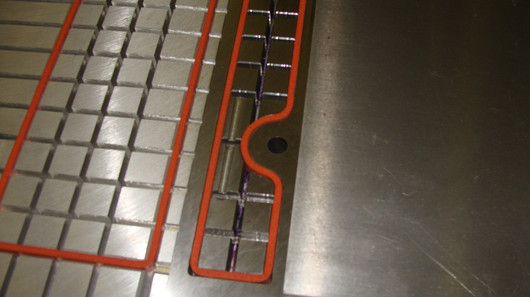One of the fastest growing trends within manufacturing and the economy is the robotics industry.
Whether it be fully automated or possibly controlled or even cobots, robots that collaborate with
humans to fulfill a job, the growth among the industry is undeniable. And with the addition of
artificial intelligence (AI) the possibilities of automation seem endless.
According to stastita.com, robotics have over doubled in the past three years and is estimated to
be over $200 billion by 2025 from $63.9 billion in 2018. The increase is largely due to the want
and need of total control and consistency within certain applications, especially in
manufacturing. Robots are able to provide that to companies.


Because a robot is able to produce within certain parameters on a consistent basis, there are
many benefits to being able to pair a robot with a human and have them work side-by-side,
known as a cobot. Pairing the capabilities of humans with the consistent precision of robots
makes cobot operations seem sensible to business owners, who are trying to continually find the
most economical way to maximize efficiency.
With this increase in robotics, workholding is going to need to adapt to the current needs.
Thankfully, that is just what workholding is good for. These robot and cobot operations often
times call for workholding. This need is no different than workholding being needed in most
other operations throughout manufacturing history.
When looking at workholding, there are nearly endless matches that could be made throughout
different industries. The ability to customize devices such as electromagnetic chucks to vacuum
workholding provides the flexibility to service the wide array of applications including
automation and robotics.
Proven to work to get that consistency, the wide array and possibilities of workholding in
robotics give the user a consistent hold on the workpiece. Traditional holding concepts can be
applied to innovative machining centers and automation assemblies with the help of engineering
and redesign concepts. Because of this, robotics and workholding do make a fruitful pair.
Magna-Lock USA workholding can be found on many shop floors that are using automation to
gain more efficiency in their machining production. Vacuum workholding for the electric vehicle
industry is currently in high demand. Electromagnetic chucks have been re-designed for CNC
machining centers that use robotics in the automotive industry. These are just two examples of
how the workholding is nearly as important to the bottom line as the robots themselves.
Pallet changing is rapidly being incorporated with robotics in the manufacturing industry as well.
The need for efficient machining, including loading and unloading, to increase profitability is
critical now more than ever as many United States manufacturers shift their focus to reshore their production and upgrade their factories.
When considering workholding for robotic machining concepts, it is imperative to be thorough in
the planning of the assembly. Providing sample parts and transparency with the design and
purpose of the automation is critical to making certain the workholding design will work fluidly
with the complete assembly.
Working with a brand of workholding that has proven experience in the robotic industry can
make the transition and integration a cinch. Magna-Lock USA has that proven experience. For
more information on using Magna-Lock USA workholding products with robotics automation,
contact our engineering team today.

Obsidian Manufacturing Industries, Inc. is a Rockford, Ill. manufacturing company and is the OEM for Magna-Lock USA workholding, MagnaLift & Power-Grip lift magnets, and Arter Precision Grinding Machines as well providing surface grinding services. They are located at 5015 28th Ave. in Rockford, Ill. with a phone number of 815-962-8700. Check out more at obsidianmfg.com/brands.
_edited.png)

















Comments